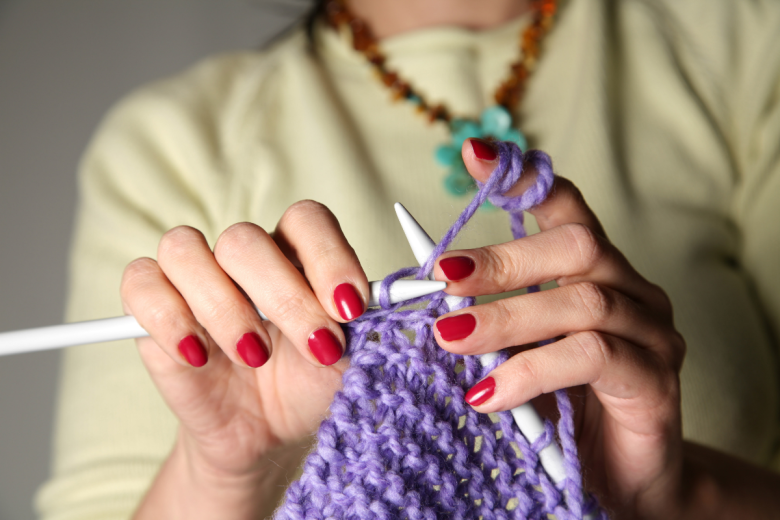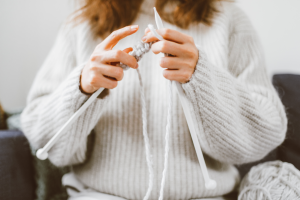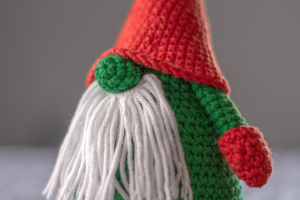Knitting is a beautiful craft, but it’s not always smooth sailing. Even the most seasoned knitters can make mistakes that leave them frustrated and staring at a tangled mess of yarn. But hey, don’t sweat it—mistakes are just stepping stones to becoming a better knitter! Let’s dive into the top five common knitting mistakes and, more importantly, how to fix or avoid them altogether.
Knitting is a relaxing and rewarding hobby, but it can also come with its fair share of challenges. Whether you’re just starting out or have years of experience, mistakes are inevitable. The beauty of knitting lies not just in creating something from yarn but in the process itself—the trial and error, the learning curve, and the sense of accomplishment when you overcome obstacles. If you’ve ever found yourself unraveling hours of work due to an error, you’re not alone. The good news is, with a bit of knowledge and patience, you can easily correct most mistakes and continue your project with confidence.
While some mistakes might seem like a setback, they often provide valuable lessons that can help you grow as a knitter. Recognizing and understanding these errors is the first step in improving your skills. In this guide, we’ll walk through some of the most common knitting pitfalls and share practical tips to help you avoid or fix them, ensuring that you can knit with ease and enjoyment. So, let’s get started and turn those pesky mistakes into opportunities for growth!
Mistake 1: Dropped Stitches
How to Spot a Dropped Stitch
A dropped stitch might look like a ladder running down your project—it’s pretty easy to spot but not so easy to ignore. It’s one of those mistakes that can make you want to scream, but trust me, it’s totally fixable.
Simple Techniques to Pick Up Dropped Stitches
All you need is a crochet hook or even the tip of your knitting needle. Simply pull the stitch back up row by row until it’s back where it belongs. Pro tip: Use stitch markers to help you keep track of your rows and avoid dropping stitches altogether.
Mistake 2: Uneven Tension
What Causes Uneven Tension?
Uneven tension happens when your knitting is either too tight or too loose, creating a fabric that looks messy or feels inconsistent. This often occurs when you’re stressed, tired, or just starting out.
Tips for Maintaining Consistent Tension
Practice makes perfect! Hold your yarn the same way every time, and take breaks to avoid hand fatigue. Using tools like tension rings can also help. Relax and find your rhythm—knitting should be enjoyable, not stressful.
Mistake 3: Misreading the Pattern
Deciphering Common Pattern Abbreviations
Patterns can feel like a foreign language with abbreviations like “k2tog” or “ssk.” Before you start, take time to read the entire pattern and keep a reference guide handy for those tricky abbreviations.
Using Stitch Markers and Notes for Clarity
Markers are your best friend! Use them to separate pattern repeats or mark specific stitches. Writing notes in the margins of your pattern can also save you from frustration later on.
Mistake 4: Incorrect Gauge
Why Gauge Matters in Knitting
Gauge is the unsung hero of a successful project. It determines how your finished piece will fit, whether it’s a snug hat or an oversized sweater. Ignore gauge, and you risk creating something unwearable.
Steps to Achieve the Right Gauge Every Time
Always knit a swatch! It might feel tedious, but it saves time in the long run. Adjust your needle size until your stitches per inch match the pattern’s requirements.
Mistake 5: Twisting Stitches in the Round
Recognizing Twisted Stitches
You’re cruising along, knitting in the round, and suddenly your project has a weird twist. This happens when your stitches aren’t aligned properly before joining.
Preventing Twists When Joining in the Round
Lay your stitches flat on the needle and double-check that nothing’s twisted before you join. Slow and steady wins the race here!
Bonus Mistake: Choosing the Wrong Yarn or Needles
Matching Yarn to Project Requirements
Not all yarns are created equal. Using the wrong weight or fiber can totally change how your project looks and feels. Always check the pattern for yarn recommendations.
Selecting the Right Needle Size
Your needle size matters as much as your yarn choice. Too small, and your project will be stiff; too large, and it’ll be floppy. Swatching can save the day again here!
How to Avoid Knitting Burnout
Setting Realistic Goals
Don’t bite off more than you can chew. Start with manageable projects and work your way up. It’s better to finish something small than abandon something big.
Taking Breaks to Refresh Your Creativity
Knitting should be a joy, not a chore. Step away when you’re feeling stuck or uninspired. Even a quick walk can help spark new ideas.
Common Tools to Help Fix Mistakes
Lifelines in Knitting
A lifeline is a piece of thread or yarn you weave through a row as a safety net. If you mess up, you can unravel back to that point without losing your progress.
Using a Crochet Hook for Quick Fixes
Crochet hooks are lifesavers for picking up dropped stitches or fixing small errors. Keep one in your knitting bag—you’ll thank yourself later.
Learning From Your Mistakes
Why Mistakes Are Part of the Process
Every knitter has a story about the time they messed up. These moments are what make you better—embrace them.
Celebrating Your Progress as a Knitter
Take time to admire how far you’ve come. Every project, mistake, and triumph adds to your skillset.
Knitting isn’t just about making beautiful things; it’s about the journey. Mistakes are part of the process, and learning how to fix them makes you a stronger, more confident knitter. So grab your needles, pick your favorite yarn, and knit on—mistakes and all!
As you continue your knitting journey, remember that perfection isn’t the goal—enjoying the process and learning from your mistakes is what truly matters. Every error is an opportunity to refine your technique and develop new skills that will serve you in future projects. The more you knit, the more you’ll learn how to troubleshoot and correct mistakes with ease, and you’ll find yourself tackling even more complex patterns with confidence.
Don’t let a small setback discourage you. Knitting is a craft that requires patience and practice, and each stitch you make brings you one step closer to mastering the art. Whether it’s unraveling a few rows to fix a dropped stitch or learning how to read your knitting to spot errors before they escalate, every challenge you face will only add to your growth as a knitter.
So, the next time you find yourself frustrated with a mistake, take a deep breath, embrace it, and remember that it’s all part of the fun. With time, you’ll come to see mistakes not as failures but as vital learning experiences that will make you a more skilled and creative knitter. Keep going, and let your love for knitting continue to grow—mistakes and all!



